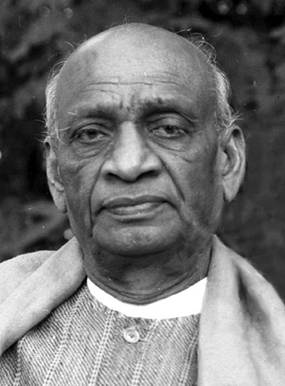Published on Oct 31, 2025
Daily Editorials Analysis
Editorials/Opinions Analysis For UPSC 31 October 2025

Content
- Sardar Patel should be Amrit Kaal’s guiding spirit
- Should AI be introduced as part of school curricula?
Sardar Patel should be Amrit Kaal’s guiding spirit
Context & Background
- Occasion: Article written on Sardar Vallabhbhai Patel’s birth anniversary (31st October), observed as National Unity Day (Rashtriya Ekta Diwas).
- Author: M. Venkaiah Naidu, former Vice President of India.
- Purpose: To recall Patel’s role in nation-building and advocate his philosophy as a guiding spirit for Amrit Kaal (2022–2047).
Relevance :
GS-1 (Modern Indian History):
- Role in national integration — merger of 562 princely states (1947–49).
- Leadership in freedom struggle — Kheda (1918), Bardoli (1928).
GS-2 (Governance & Polity):
- Architect of India’s administrative unity — establishment of All India Services.
- Model of pragmatic federalism and strong Centre for unity.
- Inspiration for cooperative federalism and civil service ethics.
GS-4 (Ethics & Integrity):
- Lived principle of “Duty before Right (Kartavya before Adhikar)”.
- Embodied honesty, service, simplicity, and integrity — model of ethical public life.
Practice Question
- Sardar Vallabhbhai Patel’s model of pragmatic nationalism and administrative discipline offers enduring lessons for governance and national integration in Amrit Kaal (2022–2047). Discuss.(250 Words)

Sardar Patel: Historical Context
- Born: 31 October 1875, Nadiad (Gujarat).
- Title: “Iron Man of India” — symbol of unity, integrity, and administrative strength.
- Freedom Struggle: Key leader in the Kheda Satyagraha (1918) and Bardoli Satyagraha (1928); earned the title “Sardar.”
- Role Post-Independence:
- As Deputy PM & Home Minister (1947–50), Patel integrated 562 princely states into the Indian Union.
- Oversaw Operation Polo (1948) — Hyderabad’s accession.
- Laid administrative foundations of the All India Services and Civil Services cadre.
Patel’s Vision of National Integration
- Challenge: Post-1947 India was a mosaic of princely states and British provinces.
- Action: Through negotiation, diplomacy, and firmness, Patel unified states except J&K, Junagadh, and Hyderabad — later integrated through decisive measures.
- Outcome: Created a politically cohesive India — cornerstone for economic and social integration.
Data Fact:
- 562 princely states comprised 40% of India’s territory and 25% of its population (1947).
- Patel and V.P. Menon achieved integration in less than two years (1947–49).
Administrative and Political Philosophy
- Core Principle: “Unity in Diversity through Discipline and Duty.”
- Governance Model:
- Pragmatic federalism — strong Centre for unity, yet cooperative relations with states.
- Merit-based administration — established the All India Services to ensure neutrality and efficiency.
- Ethics of service — believed public office was a duty, not privilege.
- Contrast with Nehru: While Nehru focused on idealism and global vision, Patel prioritised consolidation, realism, and administrative stability.
Economic and Institutional Contributions
- Advocated cooperative movements (especially dairy cooperatives in Gujarat).
- Laid groundwork for modern bureaucracy and steel-frame governance.
- Promoted industrial self-reliance and agriculture-led local development — early vision of “Atmanirbhar Bharat.”
Relevance in Amrit Kaal (2022–2047)
- Amrit Kaal Vision: Building a Viksit Bharat by 2047 — prosperous, inclusive, and secure.
- Patel’s philosophy remains crucial:
- National Unity: Countering divisive forces (regionalism, communalism).
- Good Governance: Strengthening cooperative federalism and administrative integrity.
- Discipline & Duty: Reviving ethics in politics and public life.
- Internal Security: Ensuring territorial integrity and social harmony.
- Civic Responsibility: Encouraging citizens’ participation in nation-building.
Statue of Unity: Symbolic Legacy
- Inaugurated: 31 October 2018 at Kevadia, Gujarat.
- Height: 182 metres — world’s tallest statue.
- Symbolism: Unity, strength, and resilience of India.
- Impact:
- Boosted tourism — over 1 crore visitors by 2025.
- Enhanced regional development around Narmada valley.
Comparative Leadership Lens
| Aspect | Patel | Nehru |
| Political Vision | Consolidation & unity | Ideological nation-building |
| Governance Approach | Administrative realism | Institutional idealism |
| Core Strength | Pragmatism & decisiveness | Intellectual foresight |
| Public Image | “Man of Action” | “Man of Vision” |
Ethical Dimensions
- Embodied Gandhian virtues — simplicity, honesty, service.
- Advocated that power must serve public good, not personal ambition.
- His life reflected Kartavya (Duty) before Adhikar (Right) — essence of modern ethical governance.
Key Quote
“My only desire is that India should be a strong, united, and independent nation.” — Sardar Patel
Conclusion
- Patel’s blend of pragmatism, integrity, and nation-first approach remains India’s moral compass in the 21st century.
- In Amrit Kaal, his ideals of unity, discipline, and national service must guide the transformation toward a “Shresth Bharat” — both in governance and citizen conduct.
Should AI be introduced as part of school curricula?
Context & Background
- Policy Update: Ministry of Education announced AI curriculum from Class 3 onwards (from 2026–27 academic year).
- Earlier Initiative: Skilling for AI Readiness (July 2025) — AI as a skill subject in thousands of CBSE schools from Class 6.
- Objective: Build AI awareness, literacy, and employability as part of India’s AI Vision 2047.
- Debate: Should AI be taught early? What are the risks, readiness, and pedagogical limits?
Relevance
GS-2 (Governance & Education Policy):
- Linked with NEP 2020, NCF 2023, and IndiaAI Mission (2024).
- Reflects inter-ministerial convergence — MoE, MeitY, and CBSE.
- Raises issues of digital divide, teacher capacity, and data protection (DPDP Act 2023).
GS-3 (Science & Technology):
- Builds AI literacy and AI skills for the future workforce.
- Supports India’s goal of creating 10 million AI-ready youth by 2030.
- Challenges of infrastructure, obsolescence, and ethical use of AI.
GS-1 (Society):
- Impact on children’s cognition, emotional health, and learning behavior.
- Issues of equity and inclusion in AI-based learning environments.
Practice Question
- Introducing Artificial Intelligence in school curricula must balance technological readiness with ethical responsibility and educational equity. Critically examine in light of India’s AI Vision 2047.(250 Words)
Conceptual Basics
- AI Literacy:
- Understanding AI’s logic, ethics, and decision-making.
- Developing critical thinking to interpret and question AI outputs.
- Relevant from Classes 3–8 (foundational learning).
- AI Skills:
- Coding, data analytics, natural language processing, model training.
- Suitable from Classes 9–12 (career-oriented learning).
Distinction: AI literacy builds awareness; AI skills build capability.
Current Landscape
- Global Practices:
- U.K.: AI literacy introduced in primary schools under “Computing Curriculum.”
- U.S.: AI4K12 Initiative defines 5 big ideas of AI for K–12.
- China: AI textbooks in high schools since 2018, linked with national AI strategy.
- Indian Context:
- CBSE AI Curriculum (2020) introduced as a skill elective in 409 schools initially, now scaling nationwide.
- National Education Policy (NEP) 2020: “AI-based learning outcomes, coding from early stages, digital pedagogy.”
- 2025 Survey by Youth Ki Awaaz & Young India Foundation:
- 88% of school students already use AI study companions.
- 57% use AI for non-academic chats.
- 42% share personal content with AI bots.
Arguments in Favour
- Inevitable Exposure: Children encounter AI daily (e.g., Meta AI in WhatsApp, YouTube recommendations). Hence, literacy > prohibition.
- Critical Thinking: Early literacy helps children question AI-generated information, reducing misinformation and manipulation.
- STEM Career Pathways: AI skills in higher grades foster employability in emerging tech sectors.
- Global Competitiveness: Aligns with G20 Digital Education agenda and IndiaAI Mission’s goal of creating 10 million AI-ready youth by 2030.
- Guardrails Needed: Ethical and safety design for child–AI interaction (to prevent over-dependence, privacy risks, and bias exposure).
Concerns
- Infrastructure Deficit:
- Only 9% schools have one teacher.
- 35% schools have <50 students with two teachers.
- Many lack electricity or Internet.
→ AI integration without digital infrastructure widens the digital divide.
- Unprepared Teachers:
- 50% lack formal teaching qualifications.
- Need for continuous coaching and context-based pedagogy.
- Curriculum Obsolescence:
- AI tech (e.g., prompt engineering) evolves every few months — static curricula risk irrelevance.
- Bias & Safety:
- Generative AI tools are untested for child use and often trained on biased datasets.
- Teachers creating AI bots without ethical guardrails can amplify harm.
- “Dis-education” Risk:
- Over-reliance on AI reduces motivation for independent learning.
- As per Prof. Stuart Russell (UC Berkeley) — how humanity handles AI in education is a “litmus test of its ability to regulate technology.”
Pedagogical Recommendations
- Age-wise Phasing:
- Class 1–5: Foundational learning — literacy, numeracy, critical thinking.
- Class 6–8: AI literacy — safe use, bias awareness, problem-solving.
- Class 9–12: AI skills — coding, ethics, and responsible innovation.
- Teacher Empowerment:
- Digital pedagogy training; AI-in-education certification modules.
- Unplugged AI learning (offline simulations, logic-based games) for low-resource schools.
- Ethical Framework:
- Child data protection (IT Rules 2021, DPDP Act 2023).
- AI audit systems for educational tools.
Socio-Psychological Dimension
- Children’s Vulnerability:
- Emotional attachment to chatbots replacing human interaction.
- Privacy breaches via conversational data.
- Intergenerational Impact:
- Risk of “de-learning” or “dis-education.”
- AI systems trained on past human learning; next generation may lose drive for original thought.
- Mental Health:
- Studies show overexposure to AI tools can affect attention span and emotional regulation.
Policy-Level Implications
- Alignment with NEP 2020 & NCF 2023: Outcome-based AI pedagogy integrated with skill-based learning.
- Integration with IndiaAI Mission (2024): 5 pillars — compute infrastructure, datasets, research, application development, and AI skilling.
- Public–Private Partnerships: For curriculum design (e.g., CBSE–Intel–NASSCOM collaboration).
- Regulatory Balance: Innovation-friendly but child-safe AI ecosystem.
Ethical & Governance Angle (GS-4 Relevance)
- Promotes responsible tech use, digital integrity, and empathy.
- Challenges notions of human agency, moral accountability, and authenticity in learning.
- Highlights need for ethical pedagogy — balancing curiosity with caution.
Way Forward
- Build Foundational Readiness First: Focus on literacy, numeracy, and teacher training before advanced AI modules.
- Develop Local-Language AI Tools: To ensure inclusivity and regional accessibility.
- Embed Ethics & Safety Modules: Every AI course must include data ethics and misinformation awareness.
- Monitor Outcomes: Regular NCERT–AICTE evaluations to assess impact on learning quality and equity.
- Invest in Infrastructure: Prioritize electricity, Internet, and device access in rural schools (Digital India 2.0).
Data Points
| Indicator | Data |
| AI users among students | 88% (Youth Pulse Survey 2025) |
| Students using AI for chats | 57% |
| Students sharing personal data with AI | 42% |
| Schools with 1 teacher | 9% |
| Schools with <50 students & 2 teachers | 35% |
| Target: AI-ready youth by 2030 | 10 million (IndiaAI Mission) |
Conclusion
- Premature AI curricula without infrastructure = Digital inequality.
- Balanced integration — literacy first, skills later — is the sustainable path.
- As Stuart Russell warns, the question is not “Can we teach AI?” but “Can we preserve human learning while doing so?”
